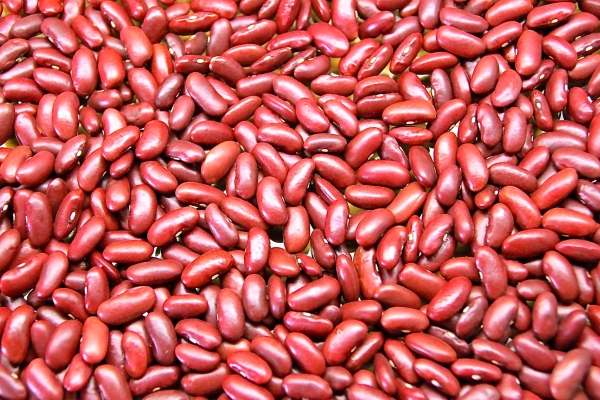Rajma is a plant-based food item rich in nutrients. It comes under the pulses category. For those who do not consume non-vegetarian meat, eggs, etc., it is very beneficial to consume nutrient-rich kidney beans. There are many benefits of consuming Rajma. Along with keeping our health good, it fulfils the deficiency of nutrients in our body. In India, its cultivation is mostly in the hilly areas of the Himalayan region and the states of Maharashtra, Karnataka, Andhra Pradesh, and Tamil Nadu.
Apart from this, farmers have also started cultivating it in other states due to good profit. Due to its great demand in the market, farmers get good prices for it. If some things are kept in mind during the production period of Rajma, then good profit can be earned from it. Today we will give you information about Rajma cultivation.
Climate Requirement
Rajma is cultivated in India in both Rabi and Kharif seasons. Temperature ranging from 15 degrees Celsius to 25 degrees Celsius is considered appropriate for its sowing.
Soil & Time
Light loamy, dry loamy soil is considered good for Rajma cultivation. Apart from this, the arrangement of water in the field should be proper. For its better crop, the pH value of the land is considered to be 5.5. Also, for breaking soil and making land suitable for sowing seeds farmers used Disc Plough implement.
Rajma farming in India is done at different times in different states. For example, UP and Bihar are sown in November’s first and second fortnight. In Maharashtra, its Rajma can be planted in the middle of October. In Haryana and Punjab, it can be sown in the first week of October. It is better to produce it from mid-May to mid-June for the Kharif season. On the other hand, for the spring crop, it is better to sow it in the first week of February and March.
Field Preparation
Prepare the field well before sowing Rajma. For this, plough the area well with a soil-turning plough. After this, 2 to 3 ploughing should be done with a local plough or cultivator. Keep in mind that the land should have sufficient moisture when sowing.
It is very important to choose good seeds for Rajma cultivation. Before buying a source, paying attention to its quality is important. For this, farmers can purchase certified seeds from the state seed storehouse or government recognized institute. Apart from this, farmers can also get their sources from their trusted farmer brothers. If you use your own produced seed, make sure to treat it before sowing.
Quantity
For sowing Rajma, you need about 120 to 140 kg of seed in one hectare. In this, it is important to keep in mind that to get more production of Rajma, there should be 2.5 to 3.5 lakh plants per hectare.
Seed Treatment
It is necessary to treat Rajma seeds before sowing. Before sowing the seeds of Kisan Bhai Rajma, they should be treated at 2 to 2.5 grams of Thiram per kilogram of seed.
Sowing Method
It should be sown in rows. The distance from the line to line should be kept at 30 to 40 cm. And the distance from the plant to the plant should be 10 cm. It is advisable to sow its seeds at a depth of 5 to 6 cm. Please tell me that the basis of Rajma is a bit hard, so it takes time to grow or germinate.
Manure & Fertilizer
It is necessary to give 100 kg of nitrogen, 50 kg of phosphorus and 28-30 kg of potash per hectare for Rajma. In this, half the amount of nitrogen, the full amount of phosphorus and potash should be given at the time of sowing and half of the remaining amount of nitrogen should be delivered in Rajma standing crop. Along with this, giving 20 kg of sulphur offers good results. On the other hand, spraying 20 per cent urea solution at 30 days and 50 days after sowing provides a good yield.
Irrigation
Rajma cultivation requires 2 or 3 irrigations. First irrigation should be done after 4 weeks of sowing. After this do weeding and hoeing. After this, it should be rinsed at an interval of one month. At the time of weeding, some soil should be offered on the plant so that the plant can get support when the pods are set. During irrigation, keep in mind that there should be no water stagnation in the field.
Disease & Prevention
Diseases and pests like white flies and aphids are found in Rajma. To prevent these, insecticide 1.5 ml, Roger or Democrats should be sprayed. On the other hand, on Rajma, as soon as muzak is seen on the leaves, an insecticide should be sprinkled by dissolving it in 1.5 ml per liter of water. Its lava mosaic diseased plants should be removed initially, and distance Z 78 or M 45 should be sprayed.
Harvesting
The Rajma crop gets ready after ripening in about 120 to 130 days. After this, dry the product in the sun for 3 to 4 days to remove its moisture. When the humidity in its seeds becomes 9 to 10 per cent, the grains should be separated from the straw. Remember that the roots may start falling from the pods due to excessive drying, and the seeds may disintegrate.
For further similar reports you can follow us. Moreover, with us, you can get more enhancive things through blogs.





